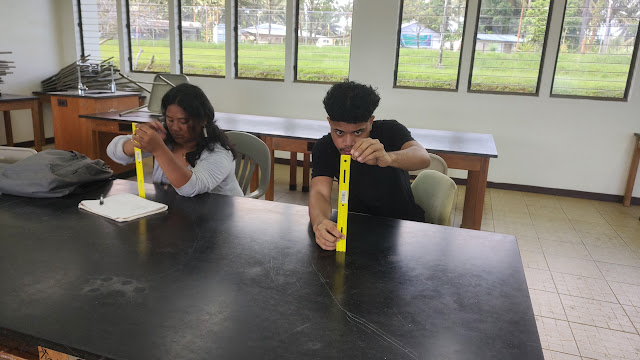Summer playthings in physical science
With the intent of showing that simple toys can be used to generate physical science laboratories, the student engaged in a speed round of investigations and Desmos analysis.
Benalyne measures the bounce height
Joanalynn measures the bounce height
Fancylynn and Piruno
The second exercise was the height of the nth bounce. All drops were from 30 centimeters. Turns out that each bounce will be about 70% to 75% of the previous bounce for a marble on a hard surface. These are simple exercises that could be done almost anywhere.
Although less obvious for a marble than for a plastic high bounce ball dropped from heights starting at one meter, there are still the hints of exponential decay. Note that the coefficients came from a regression in Desmos, but regressions cannot take custom colors. Coefficients were reproduced in an equality and then colored to keep colors unique.
Cordny, A-Ann, Piruno
Piruno, A-Ann, Marmayon
The students seemed to be more inclined to measure from the rest position of the slingball, calling that zero. In theory the use of the end of the racquet should only introduce a non-zero y-intercept.
One group was initially measuring to where the slingball stopped rolling
Two of the groups had shapes that were suggestive of a cubic relationship, although the possibility of a linear relationship cannot be ruled out. Although I recommended that the balls be launched at a consistent angle, from what I could see the pairs did not always ensure that their launch angle remained the same. Even though the data could have been linear, a cubic fit so well to both data sets that the opportunity to demonstrate a cubic fit was simply too good to pass up.
The focus here again was on what can be done with minimal equipment - the course continues to have a focus on preparing educators for the teaching in a low equipment, low support environment. Besides, simpler systems are better at demonstrating the mathematical universe than more complex systems.













Comments
Post a Comment